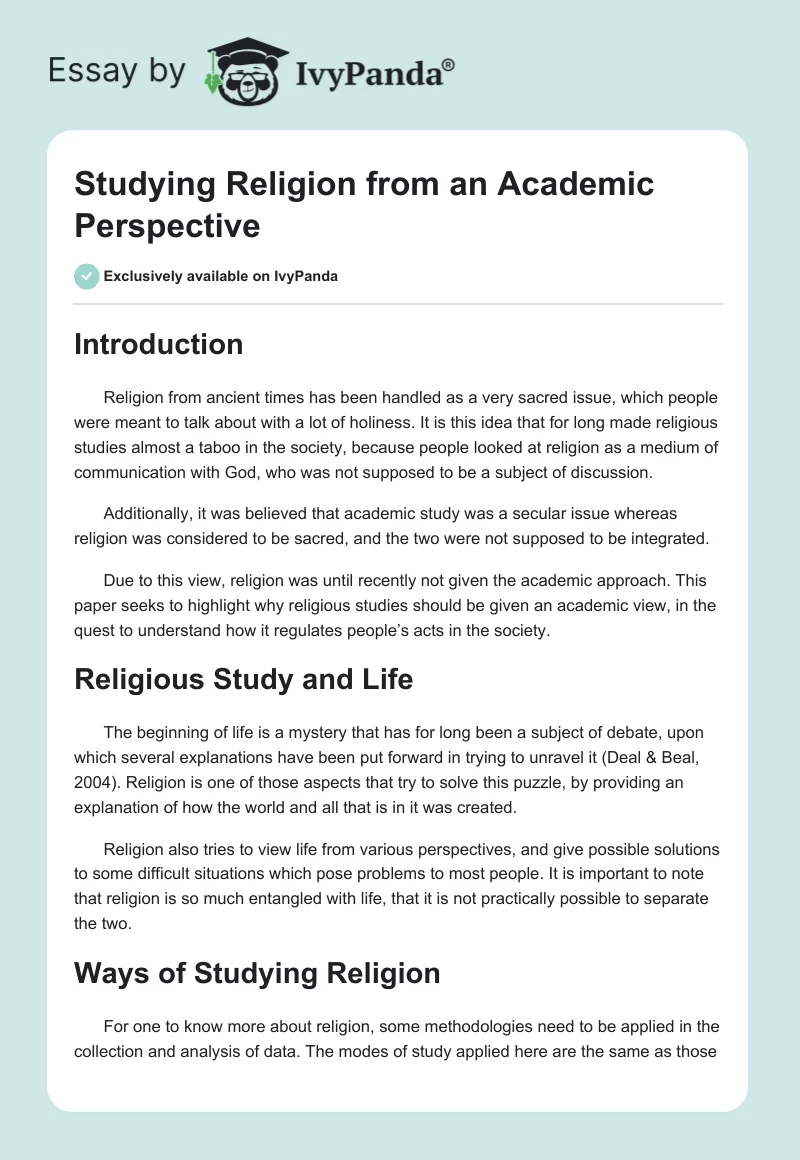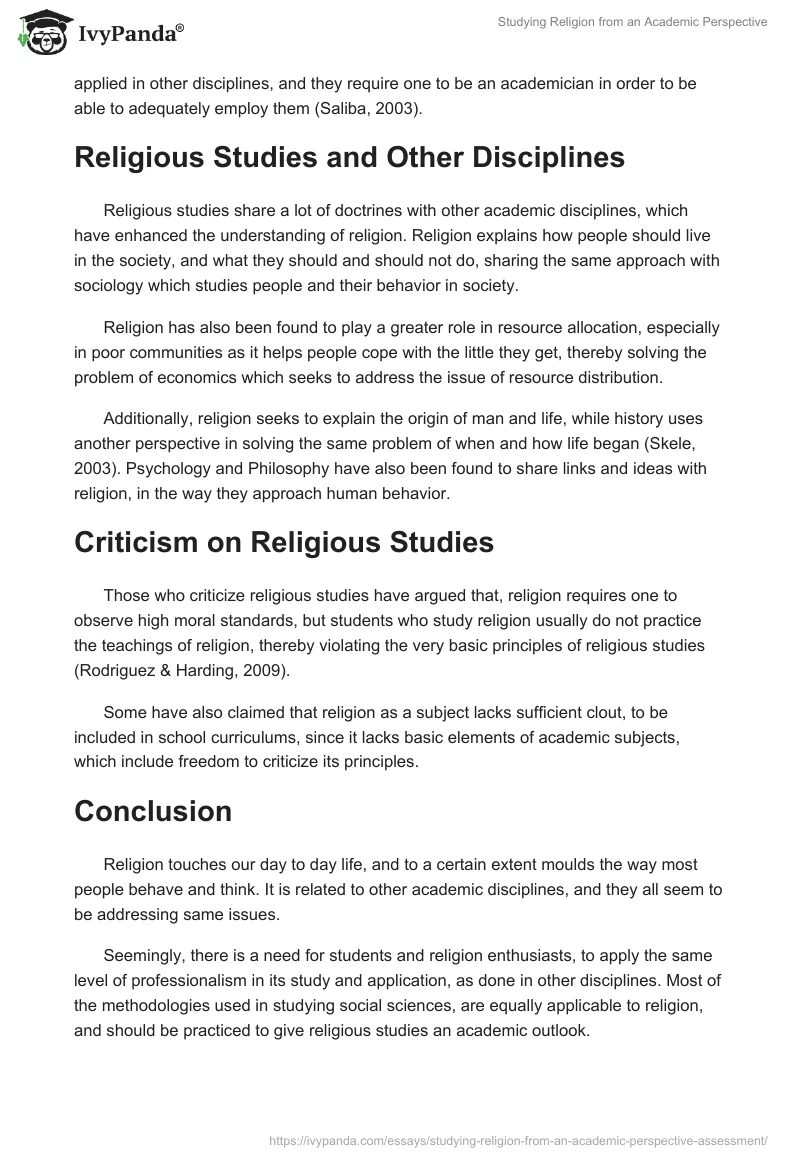Introduction
Religion from ancient times has been handled as a very sacred issue, which people were meant to talk about with a lot of holiness. It is this idea that for long made religious studies almost a taboo in the society, because people looked at religion as a medium of communication with God, who was not supposed to be a subject of discussion.
Additionally, it was believed that academic study was a secular issue whereas religion was considered to be sacred, and the two were not supposed to be integrated.
Due to this view, religion was until recently not given the academic approach. This paper seeks to highlight why religious studies should be given an academic view, in the quest to understand how it regulates people’s acts in the society.
Religious Study and Life
The beginning of life is a mystery that has for long been a subject of debate, upon which several explanations have been put forward in trying to unravel it (Deal & Beal, 2004). Religion is one of those aspects that try to solve this puzzle, by providing an explanation of how the world and all that is in it was created.
Religion also tries to view life from various perspectives, and give possible solutions to some difficult situations which pose problems to most people. It is important to note that religion is so much entangled with life, that it is not practically possible to separate the two.
Ways of Studying Religion
For one to know more about religion, some methodologies need to be applied in the collection and analysis of data. The modes of study applied here are the same as those applied in other disciplines, and they require one to be an academician in order to be able to adequately employ them (Saliba, 2003).
Religious Studies and Other Disciplines
Religious studies share a lot of doctrines with other academic disciplines, which have enhanced the understanding of religion. Religion explains how people should live in the society, and what they should and should not do, sharing the same approach with sociology which studies people and their behavior in society.
Religion has also been found to play a greater role in resource allocation, especially in poor communities as it helps people cope with the little they get, thereby solving the problem of economics which seeks to address the issue of resource distribution.
Additionally, religion seeks to explain the origin of man and life, while history uses another perspective in solving the same problem of when and how life began (Skele, 2003). Psychology and Philosophy have also been found to share links and ideas with religion, in the way they approach human behavior.
Criticism on Religious Studies
Those who criticize religious studies have argued that, religion requires one to observe high moral standards, but students who study religion usually do not practice the teachings of religion, thereby violating the very basic principles of religious studies (Rodriguez & Harding, 2009).
Some have also claimed that religion as a subject lacks sufficient clout, to be included in school curriculums, since it lacks basic elements of academic subjects, which include freedom to criticize its principles.
Conclusion
Religion touches our day to day life, and to a certain extent moulds the way most people behave and think. It is related to other academic disciplines, and they all seem to be addressing same issues.
Seemingly, there is a need for students and religion enthusiasts, to apply the same level of professionalism in its study and application, as done in other disciplines. Most of the methodologies used in studying social sciences, are equally applicable to religion, and should be practiced to give religious studies an academic outlook.
References
Deal, E., W., & Beal, K. T. (2004). Theory for Religious Studies. New York: Routledge.
Rodriguez, H., & Harding, S., J. (2009). Introduction to Study of Religion. New York: Routledge.
Saliba, A., J. (2003). Understanding New Religious Movements. Walnut Creek: Rowan & Littlefield Publishers.
Skele, G., (2009). Religious Diversity and Education: Nordic Perspectives, Munster: Waxmann Verlag.


